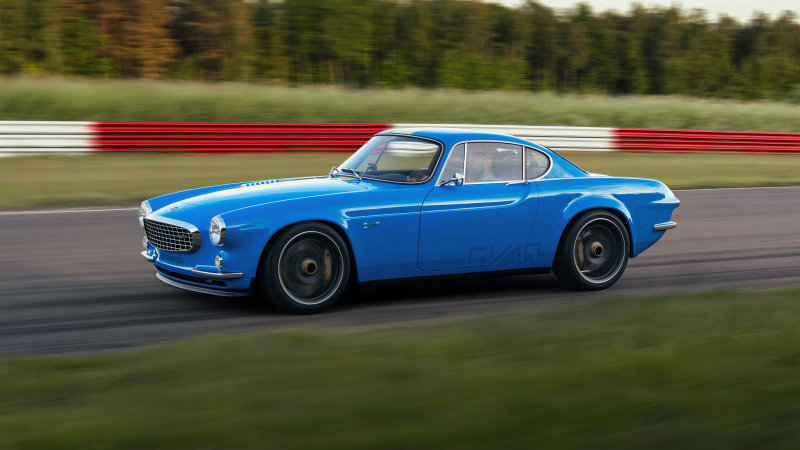Images of a mysterious Volvo P1800 strolling the streets of Gothenburg, Sweden, in full prototype regalia, sent enthusiasts on an insane search for clues in August 2020. Cyan, the company that built the updated coupe, has put dozens of rumors to rest by introducing the car and detailing the many changes made.
Let’s start with what it isn’t. Although it started life as a Volvo and is still registered as a Volvo, this P1800 was not developed or built by the Swedish firm. It is the work of Cyan Racing, a private team created in 1996 specifically to transform Volvo’s safe, solid and predictable models (such as the 850) into full-fledged champion-winning racers capable of taking on more exotic rivals. to ward off. It was known as Polestar until Volvo bought the name in 2015 and it started to transform into a standalone brand. And while most speculation has floated around electrification, the only battery you’ll find under the body is a 12-volt unit that powers the electrical system.
“Of course we could have built an electric P1800 filled with the latest technology, comfort and luxury. But that was not what we wanted,” explained founder and CEO Christian Dahl. He explained that the main goal of his team was “to get the best out of the golden 60s and combine it with our capabilities today, to maintain a pure yet refined driving experience.” It’s much closer to Singer’s 911s than Volkswagen’s battery-powered e-Bulli.
Starting with a 1964 P1800, Cyan has widened the body and moved the greenhouse. It also used high quality steel and carbon fiber to reinforce the weak points of the original structure. With the base covered, it turned its attention to the design. Up front, the P1800 gets a pair of air intakes, a splitter and a two-piece bumper. At the rear, the fins that were characteristic of the original car have been toned down and the exhaust tip moves to the center.
Images of the interior have not been released, but if you look through the windshield you can see that the coupé gets a roll cage and sports seats for the front passengers. The dashboard-mounted rear-view mirror remains.
Cyan evaluated a wide variety of engines, including the original B18 four-cylinder, the sonorous five-cylinder used for years, and the 2.0-liter found in most of Volvo’s modern cars. He eventually opted for a direct-injection, turbocharged 2.0-liter four-cylinder to develop 420 horsepower at 7,000 rpm and 355 pound-feet of torque at 6,000 rpm. Shared with the SC60 TC1 race car, among others, it spins the rear wheels via a five-speed manual transmission, a carbon fiber drive shaft and a limited slip differential. Performance specs aren’t available, but Cyan’s P1800 should be extremely fast as it drops the scales at 2,182 pounds. In other words, it’s about 160 pounds lighter than a 2020 Mazda MX-5 Miata, but it’s more horsepower than an Audi RS3.
Larger brakes hidden behind 18-inch wheels keep power in check, and Cyan proudly stated that the P1800 doesn’t come with ABS, traction control, or even a brake booster. Suspension adjustments round out the chassis upgrades. Here, too, the company started from scratch, using its racing car experience to design a fully adjustable setup made largely with aluminum components. In particular, it replaced the active rear axle used by the P1800 when it was newly equipped with an in-house developed independent suspension.
“The most challenging part of the project was trying to strike the balance between staying close to the authentic analogue driving experience of the 1960s and what is achievable with today’s advanced engineering and performance levels,” a company spokesperson told Autoblog. On paper, it looks like Cyan took it off.
Cyan’s resto-modified P1800 isn’t just a one-off model built to fuel this week’s pub talk. It plans to sell the coupé to the public. While production isn’t limited, the company predicts its hot rod will be a low-volume model. It’s already taking orders, and Autoblog can reveal prices starting at $ 500,000 before considering options.
